 W
WAndo Jubei (1876–1956) was a Japanese cloisonné artist from Nagoya. Along with Hayashi Kodenji, he dominated Nagoya's enameling industry in the late Meiji era. Ando, Namikawa Yasuyuki, and Namikawa Sōsuke are considered the three artists whose technical innovations brought in the "Golden Age for Japanese cloisonné" in the late 19th century.
 W
WShigeo Fukuda was a sculptor, medallist, graphic artist and poster designer who created optical illusions. His art pieces usually portray deception, such as Lunch With a Helmet On, a sculpture created entirely from forks, knives, and spoons, that casts a detailed shadow of a motorcycle.
 W
WIchiro Fukuzawa was a Japanese modernist painter credited with the establishment of Surrealism in Japan's artistic communities during the early-1930s.
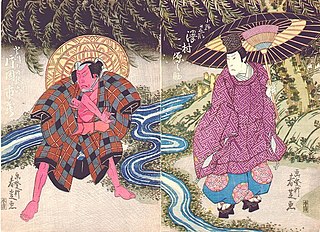 W
WGatōken Shunshi was a designer of ukiyo-e Japanese woodblock prints in Osaka who was active from about 1820 to 1828. He was a student of Shunkōsai Hokushū and the teacher of Gakōken Shunshi. Gatōken Shunshi is best known for his portraits of the kabuki actors, especially the star Onoe Tamizō II.
 W
WMegumi Igarashi , who uses the pseudonym Rokudenashiko , is a Japanese sculptor and manga artist who creates works that feature female genitalia and are often modeled after her own vulva. Rokudenashiko considers it her mission to reclaim female genitalia as part of women’s bodies and demystify them in Japan’s male dominated society, where she believes that they are "overly hidden" and marginalized as “taboo” and “obscene” in comparison to phallic imagery. As such, the artist has created a variety of different representations of manko, the Japanese slang for vagina or pussy, using representations of her own body as the raw material to emphasize as return to experience within art and manga. Rokudenashiko has been called an international symbol of “manko positivity.”
 W
WItaya Hazan was a Japanese artist widely considered a pioneer of modern Japanese ceramics.
 W
WKitamura Junko is a Japanese ceramic artist. Examples of her work are in the Museum of Fine Arts, Houston, The Brooklyn Museum, the British Museum, the Museum of Fine Art, Boston, and the Arthur M. Sackler Gallery, Smithsonian. She has won prizes for her work from the Siga Prefecture Art Exhibition in 1983, the Kyoto Art and Crafts Exhibition in 1984 and 1985, and the World Triennial Exhibition of Small Ceramics in Zagreb, Croatia in 1997. Kitamura completed her MFA at the Kyoto City University of Art. She is married to artist Yo Akiyama, and was the student of two prominent Japanese artists: Suzuki Osamu and Kondo Yutaka.
 W
WOn Kawara was a Japanese conceptual artist who lived in New York City from 1965. He took part in many solo and group exhibitions, including the Venice Biennale in 1976.
 W
WHarue Koga was a Japanese avant-garde painter active from the 1910s to the early 1930s. He is considered to be one of the first and one of the most representative Japanese surrealist painters.
 W
WFuruya Kōrin was a Japanese artist, illustrator, and designer active in the Kyoto arts and crafts circle in the Meiji period of the late 19th and early 20th centuries. His pseudonym references Ogata Kōrin (1658–1716), also from Kyoto, and he described himself as a "Kōrin of the modern age".
 W
WYayoi Kusama is a Japanese contemporary artist who works primarily in sculpture and installation, but is also active in painting, performance, video art, fashion, poetry, fiction, and other arts. Her work is based in conceptual art and shows some attributes of feminism, minimalism, surrealism, Art Brut, pop art, and abstract expressionism, and is infused with autobiographical, psychological, and sexual content. She has been acknowledged as one of the most important living artists to come out of Japan.
 W
WMaki Haku is the artistic name of Maejima Tadaaki, who was born in Ibaraki Prefecture. He was a sōsaku-hanga artist in 20th Century Japan. During World War II, Maejima Tadaaki was trained as a kamikaze pilot in the Japanese air force, but the war ended before he was assigned a mission. Haku had no formal art training, but studied for two years with the sōsaku-hanga artist Onchi Kōshirō (1891–1955).
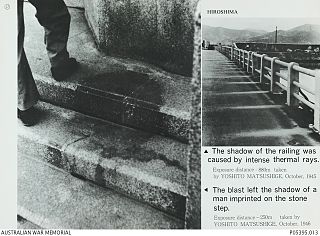 W
WYoshito Matsushige was a Japanese photojournalist who survived the dropping of the atomic bomb on the city of Hiroshima on 6 August 1945 and took five photographs on the day of the bombing in Hiroshima, the only photographs taken that day within Hiroshima that are known.
 W
WKeiko Minami was a Japanese artist, aquatint engraver, and poet. She is best known for her pictograph-like aquatints with a whimsical, childlike aesthetic.
 W
WShizuka Miura was a Japanese ball-jointed doll maker, singer, songwriter, and guitarist. She became recognized in Japan for her doll work. Worldwide, Shizuka is best known for having been the founder and front woman of the rock band Shizuka.
 W
WShigeru Miyamoto is a Japanese video game designer, producer and game director at Nintendo, where he serves as one of its representative directors. He is the creator of some of the most acclaimed and best-selling game franchises of all time, including Mario, The Legend of Zelda, Donkey Kong, Star Fox and Pikmin. He is widely regarded as one of the most accomplished and influential designers in the history of video games.
 W
WJunko Mori is a Japanese artist and metalworker born in Yokohama, Japan.
 W
WDaidō Moriyama is a Japanese photographer. He received the Infinity Award for Lifetime Achievement from the International Center of Photography in New York in 2004 and the Hasselblad Award in 2019.
 W
WRune Naito was the pen name of Japanese artist, illustrator, writer, and designer Isao Naito . His illustrations of "large-headed" (nitōshin) baby-faced girls, first drawn for Japanese magazines in the mid-1950s, are credited with pioneering the contemporary culture and aesthetic of kawaii. He is further noted for his contributions to the Japanese gay men's magazine Barazoku, the first commercially circulated gay magazine in Japan.
 W
WTatsuo Okada (1900–1937) was a Japanese avant garde artist, illustrator, graphic designer, typographer editor and a member of the radical Japanese performance group, Mavo.
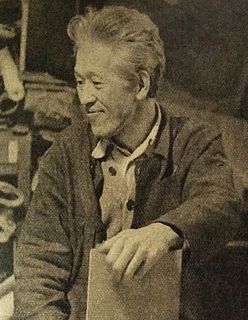 W
WKōshirō Onchi , born in Tokyo, was a Japanese print-maker. He was the father of the sōsaku-hanga movement in twentieth century Japan, and a photographer. His work was part of the painting event in the art competition at the 1932 Summer Olympics.
 W
WYoko Ono is a Japanese multimedia artist, singer, songwriter and peace activist. Her work also encompasses performance art, which she performs in both English and Japanese, and filmmaking.
 W
WKeisuke Serizawa was a Japanese textile designer. In 1956, he was designated as a Living National Treasure by the Japanese government for his katazome stencil dyeing technique. A leading member of the mingei movement founded by Yanagi Sōetsu, Serizawa visited Okinawa several times and learned the Ryūkyū bingata techniques of dyeing. Chōsuke Serizawa (Archaeologist) was his son.
 W
WMigishi Setsuko was a Japanese yōga (Western-style) painter. Known for employing vivid colors and bold strokes for still-life and landscape, Migishi contributed greatly to the establishment and elevation of the status of female artists in the Japanese art scene.
 W
WFukumi Shimura is a Japanese textile artist who has created kimono since 1958. Shimura was awarded multiple honours including the Living National Treasure in 1990 and the 2014 Kyoto Prize in Arts and Philosophy.
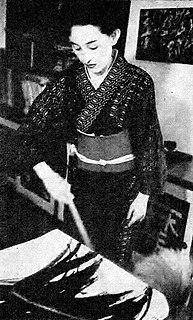 W
WToko Shinoda was a Japanese artist working with sumi ink paintings and prints. Her art merged traditional calligraphy with modern abstract expressionism. A 1983 interview in Time magazine asserted "her trail-blazing accomplishments are analogous to Picasso's". Shinoda's works have been exhibited at the Hague National Museum, the Art Institute of Chicago, Cincinnati Art Museum, and other leading museums of the world.
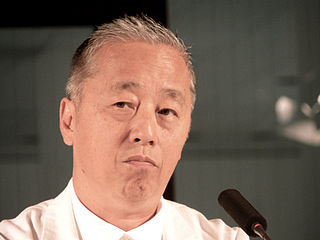 W
WHiroshi Sugimoto is a Japanese photographer and architect. He leads the Tokyo-based architectural firm New Material Research Laboratory.
 W
WTakahashi Shōtei (高橋松亭), born Hiroaki was a 20th-century Japanese woodblock artist in the shin-hanga art movement.
 W
WTakamizawa Michinao also known as Michinao Takamizawa, was an early twentieth century Japanese dadaist artist.
 W
WToshiyuki Tanaka was a Japanese contemporary artist known for his use of overlapping vermilion and orange circles as the main motif in his paintings and large scale mosaic murals.
 W
WTsuneko Taniuchi, born in Nishinomiya, Hyōgo, Japan, in 1946, is a contemporary artist, who uses performance as her main medium. Her practice, which oscillates between scripted situations and participatory works, aims to question cultural, social, and sexual constructions, linked to notions of identity, immigrations, and feminism.
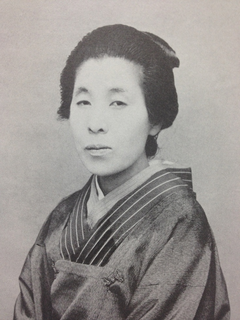 W
WUemura Shōen was the pseudonym of an artist in Meiji, Taishō and early Shōwa period Japanese painting. Her real name was Uemura Tsune. Shōen was known primarily for her bijin-ga, or paintings of beautiful women, in the nihonga style, although she produced numerous works on historical themes and traditional subjects. Shōen is considered a major innovator in the bijin-ga genre despite the fact she often still used it to depict the traditional beauty standards of women. Bijin-ga gained criticism during the Taisho era while Shōen worked due to its lack of evolution to reflect the more modern statuses of women in Japan. During bijin-ga's conception in the Tokugawa, or Edo, period, women were regarded as lower class citizens and the genre often reflected this implication onto its female subjects. Within the Taisho era, women had made several advancements into the Japanese workforce, and artistry specifically was becoming more popular outside of pass times for the elite, which opened way for Shōen's success. Shōen received many awards and forms of recognition during her lifetime within Japan, being the first female recipient of the Order of Culture award, as well as being hired as the Imperial Household's official artist, which had previously only employed one other official woman in the position. In 1949 she died of cancer just a year after receiving the Order of Culture Award.
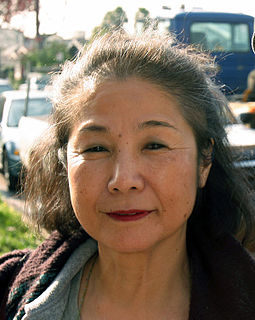 W
WYoshiko Iwamoto Wada is a Japanese-born American textile artist, curator, art historian, scholar, professor, and author. She has received international recognition for her scholarship and expertise in the field of textile art. In 2010, she was named a "Distinguished Craft Educator - Master of Medium" by the James Renwick Alliance of the Smithsonian Institution, who stated: "she is single-handedly responsible for introducing the art of Japanese shibori to this country". In 2016 she received the George Hewitt Myers Award for Lifetime Achievement.
 W
WYamashita Kumi is a Japanese artist based in New York. She was born in 1968 in Takasaki, Japan, and then relocated to the United States in high school as part of an exchange student program.
 W
WYukinori Yanagi is a contemporary Japanese artist.
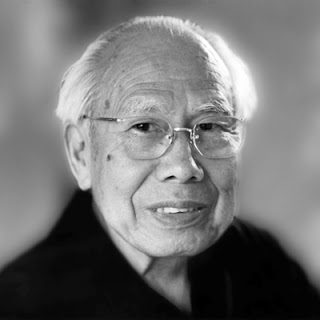 W
WAkira Yoshizawa was a Japanese origamist, considered to be the grandmaster of origami. He is credited with raising origami from a craft to a living art. According to his own estimation made in 1989, he created more than 50,000 models, of which only a few hundred designs were presented as diagrams in his 18 books. Yoshizawa acted as an international cultural ambassador for Japan throughout his career. In 1983, Emperor Hirohito awarded him the Order of the Rising Sun, 5th class, one of the highest honors bestowed in Japan.
 W
WMatsuda Yuriko is a Japanese ceramic artist.